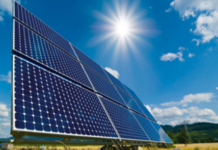
ARENA laid out its new Investment Plan outlining its investment priorities for the coming years and has promised to accelerate solar PV innovation and development.
The government agency will dedicate AUD$800 million towards its four new priorities: delivering a secure and reliable electricity system; accelerating solar PV innovation; improving energy productivity; and exporting renewable energy.
Ivor Frischknecht, CEO of ARENA, said: “As Australia shifts from fossil fuel generation to a low emission energy system with more renewables and more distributed energy resources, we need to make sure energy is secure, reliable and affordable.”
ARENA are now looking for new ways to adapt the electricity grid to boost productivity, increase flexibility and better integrate renewables so that energy can be stored and shared when and where it is needed, Frischknecht added.
He went on to say: “As part of this focus, we will be looking at a range of flexible capacity technologies and mechanisms from storage to demand response that will allow us to match electricity supply and demand at all times.”
ARENA has also pledged to focus specifically on research and development of solar PV.
Frischknecht said: “Australia has some of the best solar researchers in the world, and we plan to support them so they can continue making solar PV more competitive and affordable.”
In addition, as one of the agency’s top priorities for solar PV innovation and development, ARENA will aim to substantially reduce the cost of solar in Australia.
“By funding further innovation, we could see solar power produce 30 per cent of Australia’s electricity within 20 years,” Frischknecht said.
ARENA intends to reduce emissions and energy costs across the building, transport and industrial sectors by making energy use more productive.
ARENA will also help Australia meet – and potentially exceed – the National Energy Productivity Plan goal to improve energy productivity by 40 per cent by 2030.
Frischknecht said: “We want to show the benefit of adopting different technologies and approaches – such as energy efficiency, electrification and fuel switching to renewable energy sources.”
Beyond improving Australia’s own energy supply, the agency will also look to ensure Australia is at the forefront of exporting renewables in the future – ARENA said.
Total solar energy capacity in the counrty has now surpassed the 6 gigawatt (GW) mark, enough power to meet the electricity needs of 1.3 million households.
Source: http://www.climateactionprogramme.org


















